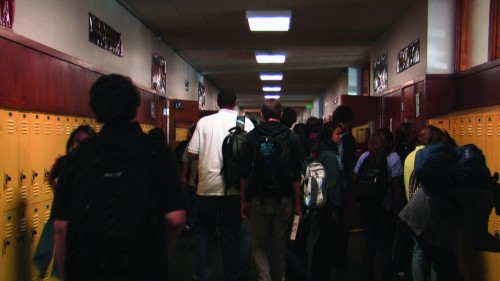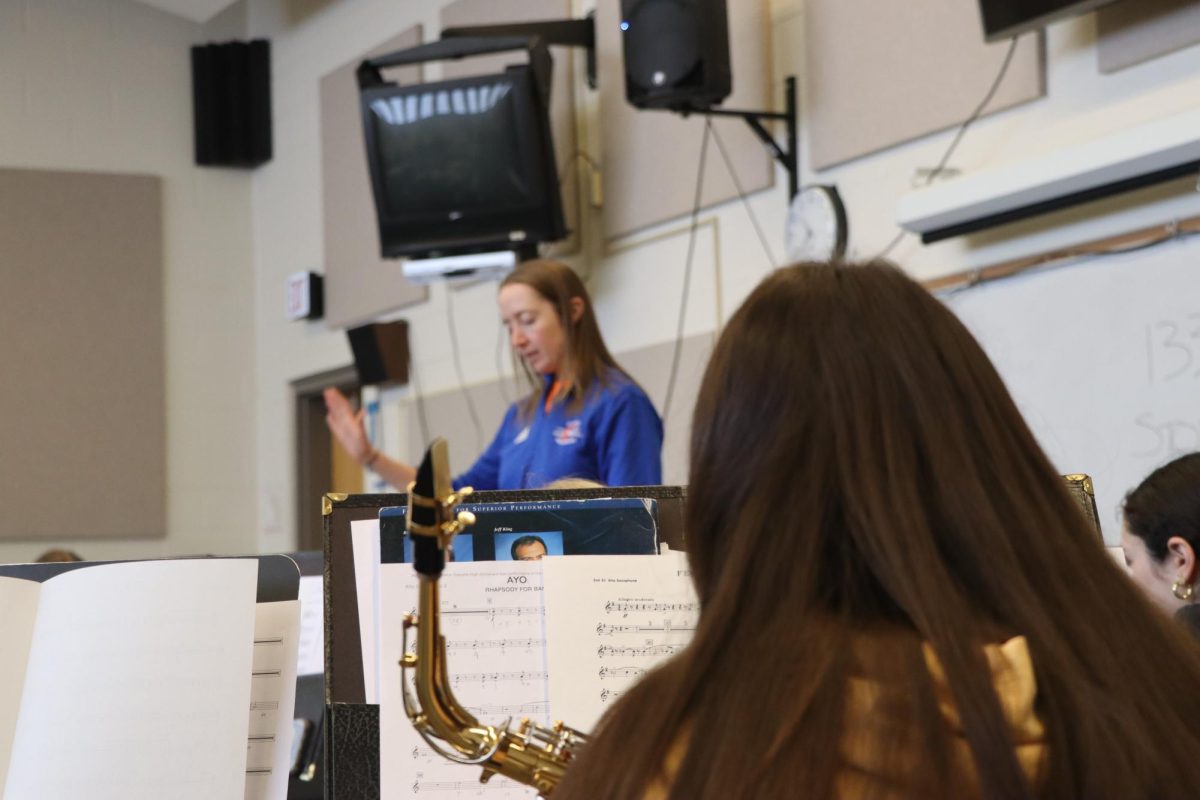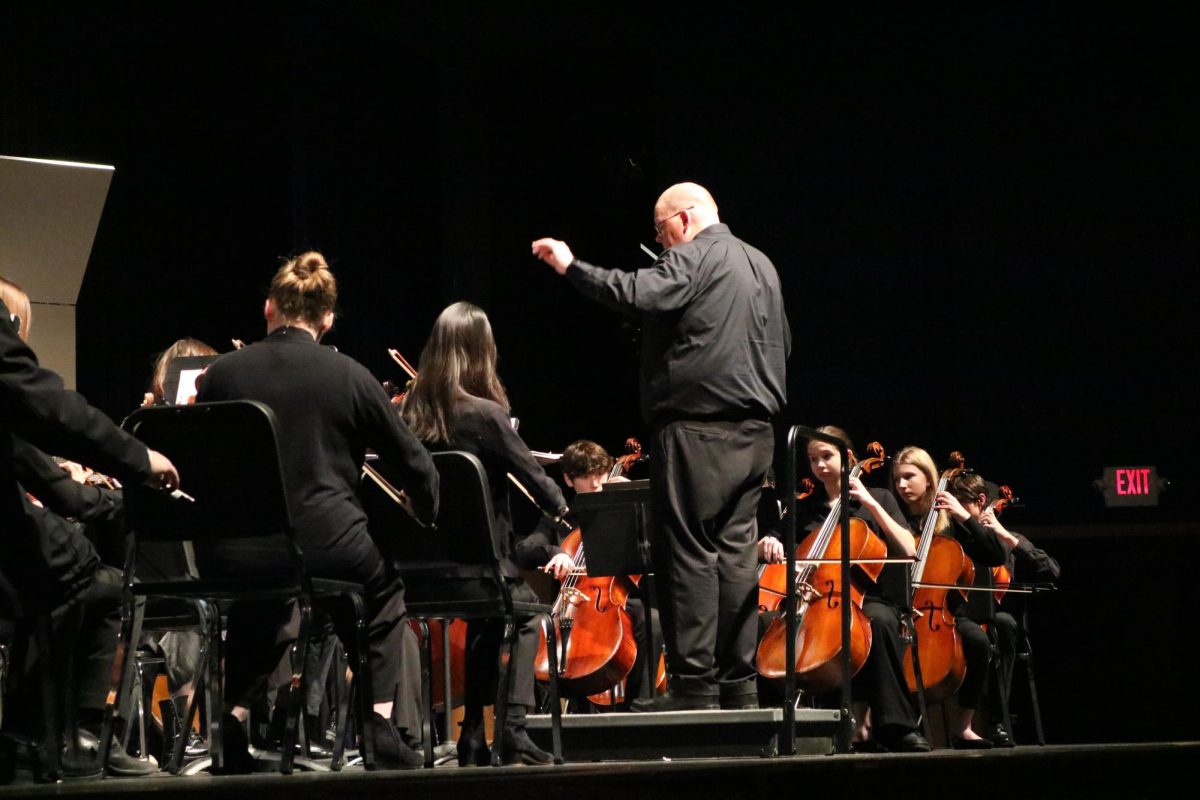Stress: it’s an unavoidable and rather commonplace accompaniment to our daily lives that most think little of changing. However, recent outcries have brought the issue that was previously not seriously debated into the center of public forum. We are now forced to address the question: has stress reached a crisis level in the U.S. education system, or is the problem simply exaggerated by extreme cases?
The film, “Race to Nowhere,†co-directed and produced by Vicki Abeles, focuses on the stories of young students and educators that have felt the sting of an overwhelmingly stressful education system.  For more information concerning the film, visit its website.
“Race to Nowhere†was recently shown at the Hi-Pointe Theater for all those in the Clayton School District that wished to see it; parents, students, and teachers alike.

After the film was shown, a discussion and debate was held. This discussion and debate, however, have continued on long past the final minutes of the showing.
For some, the film was eye-opening in its depiction of students pushed to the brink by stress.
Senior Alison Bayly was surprised by the extent to which pressure has affected students.
“The film opened my eyes to how much pressure some students feel, even if I don’t feel the exact same pressure,†Bayly said.
The severity of the problem depicted in the film raised concerns from teachers and parents that student stress may be reaching dangerous levels.
Math teacher Barbara Dobbert agrees with the film’s message that the pressures of high school have increased to a point that is overwhelming. Dobbert’s point of view is fortified by her observations with her own students.
“Kids are tired from not getting enough sleep, overextended, getting sick, and showing signs of mental anguish,†Dobbert said.
Students that viewed the film agreed that the problems presented in the film were relatable to their own lives.
For some students, the issues of the film’s stressed protagonists resonated with their own.
Senior Samantha Corson was able to see similarities between the film’s critique of the flaws of the educational system and her own complaints.
“I think it had a really good message and brought up some good points about what school is like for kids today,†Corson said. “It agreed with a lot of things my friends and I complain about on a week to week basis.â€
Clayton, which contains a wide variety of students, seems to present a legitimate example of what the general high school stress experience is like.
Dobbert acknowledges Clayton’s reputation for being academically excellent, but maintains that Clayton is no different in respect to stress from other schools.
“Clayton is definitely a high-caliber school, but I don’t think it’s that unique in its stress environment,†Dobbert said. “I think the stress problem is a crisis everywhere.â€
Chemistry teacher Nathan Peck, agrees that Clayton is a high-achieving school, but is skeptical that the stress ‘crisis’ is really as big of a problem as it was made out to be in the film, especially at Clayton.
“Most kids who aren’t learning anything aren’t stressed out about not learning anything,†Peck said. “So you would think that Clayton would be a candidate school where you might see some of the behaviors [shown in the film] but I think people are pretty healthy here. I saw a lot more of the signs of unhealthy stress like anorexia or anxiety disorders at my previous school.â€
Peck was not alone in his skepticism on the message being promoted by “Race to Nowhere.â€Â Though many acknowledged the film was alarming in the stories it presented, they maintained the film had a skewed perception of the issue.
“While the movie had valid points it focused on a very specific group of kids and students,†Corson said. “It didn’t really look at both sides of the spectrum.â€
Adding to the skepticism arising from the lack of variety in perspective was the focus on very extreme cases of student stress and what could have been a biased point of view.
“[Abeles’] bad experience with her own kids is exacerbated by the very tragic suicide of one of the older girls’ classmates, which is a rare occurrence,†Peck said. “They attributed the suicide to the young woman doing poorly on a math test. Honestly, there are other issues there if someone is committing suicide because they did poorly on a math test.â€
Bayly agrees that the severity of the repercussions shown in the film could have wrongly influenced viewers in their opinions.
“I thought the film was pretty unbalanced,†Bayly said. “The movie brought up suicide and a lot of really serious mental illness which it seemed to suggest were all due to extreme stress.â€
Still, there are people on the other side of the spectrum who insist that these tragedies are merely symptoms of the bigger, more urgent problem.
No matter what differences in opinion the film may have brought about for its viewers, all can agree that the film has been a success in sparking discussion and changes.
Some teachers in the math department have initiated a new homework system in which homework is optional, but is graded for the students that elect to do it.
Students in AP Language have been assigned the task of conducting surveys on the film’s subject and possible reactions to the issue presented. Principal Louise Losos has noted the student’s efforts in pursuing what seems to be a major topic of debate.
“I was really impressed with the students in the AP Lang class and how they have not let the issue go,†Losos said. “They didn’t agree with everything in the movie and they wanted to gather their own data. They’re going to be surveying students, parents, and teachers to find if the results support what the movie said or if there’s a disconnect between the three groups.â€
Though data will certainly help to solidify the facts surrounding the issue, a meeting has already been set up between Clayton and several other school districts to confront the problem.
“I think what would be most helpful would be to get a collection of schools in the area to go along with any changes we might want to make so it’s not Clayton doing ‘X’, it’s Clayton, Ladue, John Burroughs, MICDS,†Losos said. “That could start a trend.â€
Still, some are resistant to making any changes to a curriculum that has contributed to Clayton’s reputation as a high-achieving school. Though the future remains unclear, it is certain that both students and teachers have been forced to confront the issue of student stress and determine for themselves whether it’s real or exaggerated, and even further, what the next step should be.






